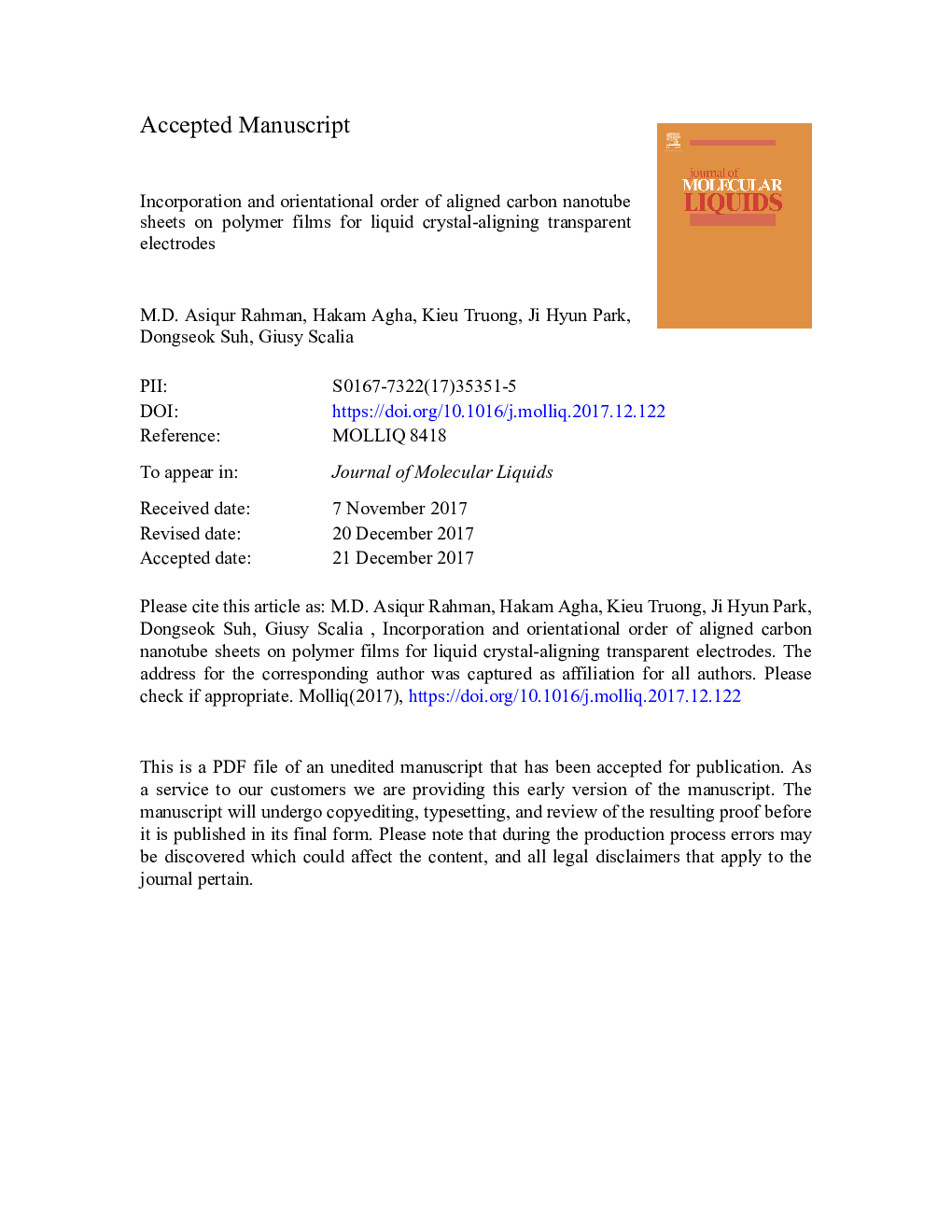| Article ID | Journal | Published Year | Pages | File Type |
|---|---|---|---|---|
| 11015953 | Journal of Molecular Liquids | 2018 | 10 Pages |
Abstract
Carbon nanotube (CNT) sheets can have several functionalities, acting as transparent electrodes and more interestingly, as alignment layer for liquid crystals (LCs). Their flexibility, and mechanical strength make them ideal for flexible electronic applications. For this use, one aspec bt that needs to be addressed is their implementation with polymer substrates. The realization of the C NT films is quite easy, but a good adhesion between CNTs and substrates is not trivial. Here we explore the use of various polymer substrates focusing on the adhesion of the nanotubes on top. By using ethanol we improve the adhesion forcing the nanotubes to lie completely on the surface. However, this is at the expense of a decrease in orientational order of CNTs, which is detrimental for using them as aligning layer for LC. Poly(methyl methacrylate) (PMMA) has the best performance among the tested polymers, but it still shows a decrease in orientational order after deposition. Nevertheless, the CNT-PMMA substrates were able to impose some homogenous alignment on the nematic LC (4-Cyano-4â²-pentylbiphenyl, 5CB) proving that aligned CNT sheets are suitable for a variety of electro-optic applications with LCs.
Keywords
Related Topics
Physical Sciences and Engineering
Chemistry
Physical and Theoretical Chemistry
Authors
MD. Asiqur Rahman, Hakam Agha, Thuy-Kieu Truong, Ji Hyun Park, Dongseok Suh, Giusy Scalia,
